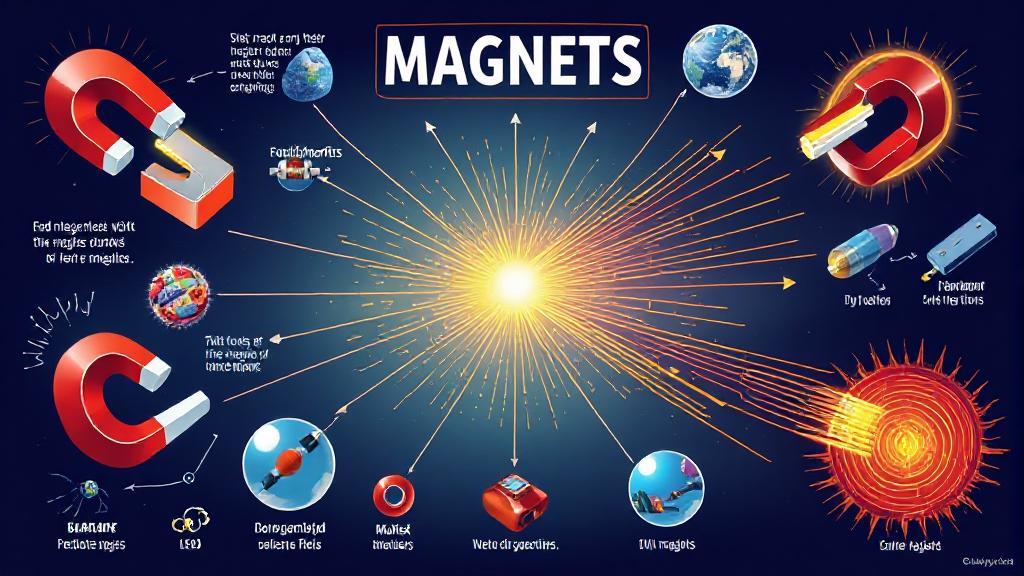Introduction to Magnets
Magnets are fascinating objects that have been used by humans for thousands of years. They are materials or objects that produce a magnetic field, which is invisible but responsible for the most notable property of a magnet: a force that pulls on other ferromagnetic materials and attracts or repels other magnets. The study of magnets and their properties is crucial in understanding various phenomena in physics and engineering.
Basic Properties of Magnets
All magnets share fundamental properties that make them unique:
- Polarity: Every magnet has two poles, north and south. Opposite poles attract each other, while like poles repel.
- Magnetic Field: The area around a magnet where magnetic forces are exerted. It is represented by field lines that emerge from the north pole and enter the south pole.
- Magnetic Force: The force exerted by a magnet when it attracts or repels another magnetic material.
- Temperature Sensitivity: Magnets lose magnetism above their Curie point
- Magnetic Induction: The process by which a magnet induces a magnetic field in a nearby object.
Types of Magnets
1. Permanent Magnets
Permanent magnets maintain a persistent magnetic field without external influence. Common types include:
- Neodymium Magnets: The strongest type of permanent magnets, composed of neodymium, iron, and boron. Used in hard drives and speakers.
- Alnico Magnets: Made from aluminum, nickel, and cobalt, known for high temperature stability and used in sensors and motors.
- Ceramic (Ferrite) Magnets: Made from iron oxide and strontium carbonate, inexpensive and commonly used in refrigerator magnets.
2. Temporary Magnets
Temporary magnets behave like permanent magnets when within a strong magnetic field but lose their magnetism when the field is removed. Examples include:
- Paper clips
- Steel nails
- Iron filings
3. Electromagnets
Created by running an electric current through a coiled conductor, typically copper wire. Their strength depends on:
- Number of wire turns
- Current strength
- Core material properties
Applications
Medical Applications
"Magnetic Resonance Imaging (MRI) has revolutionized medical diagnostics by providing detailed internal body images without radiation exposure." - National Institute of Biomedical Imaging and Bioengineering
- MRI machines
- Targeted drug delivery
- Magnetic therapy devices
Industrial and Transportation Applications
- Electric Motors and Generators: Convert between electrical and mechanical energy
- Magnetic Separation: Used in recycling and mining
- Magnetic Levitation: Used in maglev trains
- Anti-lock Braking Systems
- Compass Navigation
Emerging Technologies
Recent developments include:
- Quantum Computing using magnetic properties
- Magnetic Refrigeration offering energy efficiency
- Sustainable energy solutions
Environmental Impact
Modern magnetic technologies contribute to environmental sustainability through:
- Efficient electric motors
- Clean energy generation
- Recyclable materials
- Reduced energy consumption
For more detailed information about magnets and their applications, you can explore resources like:
